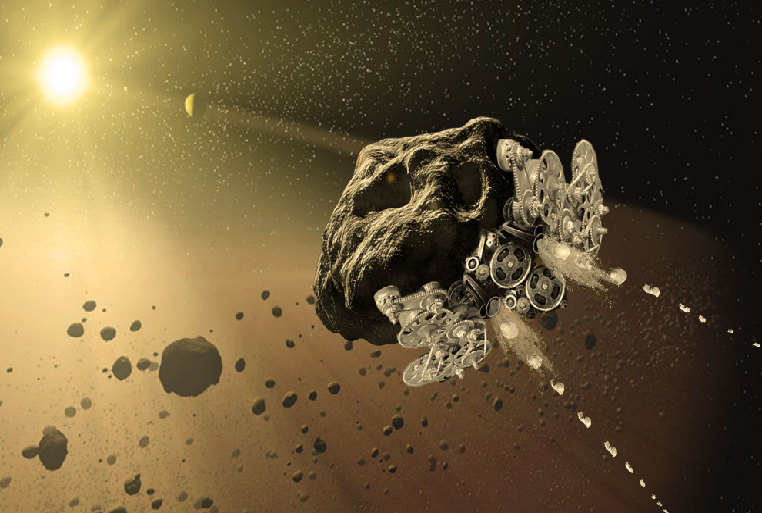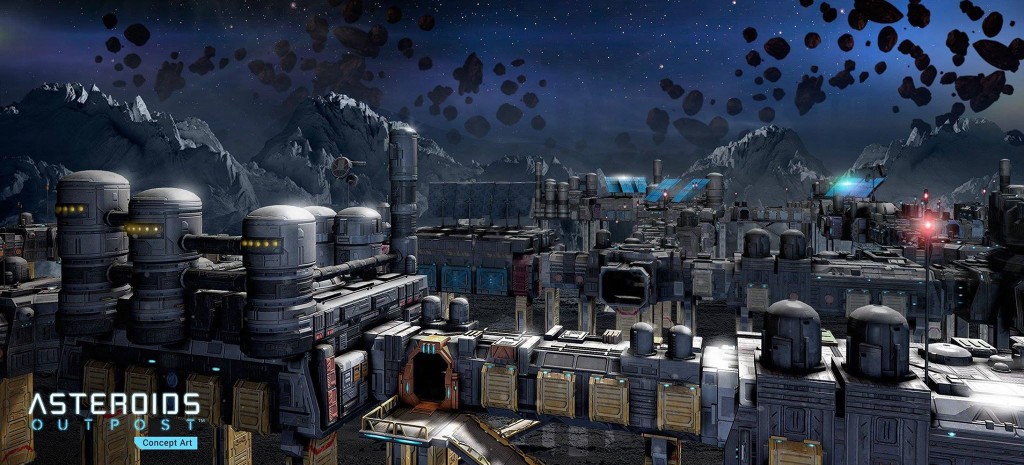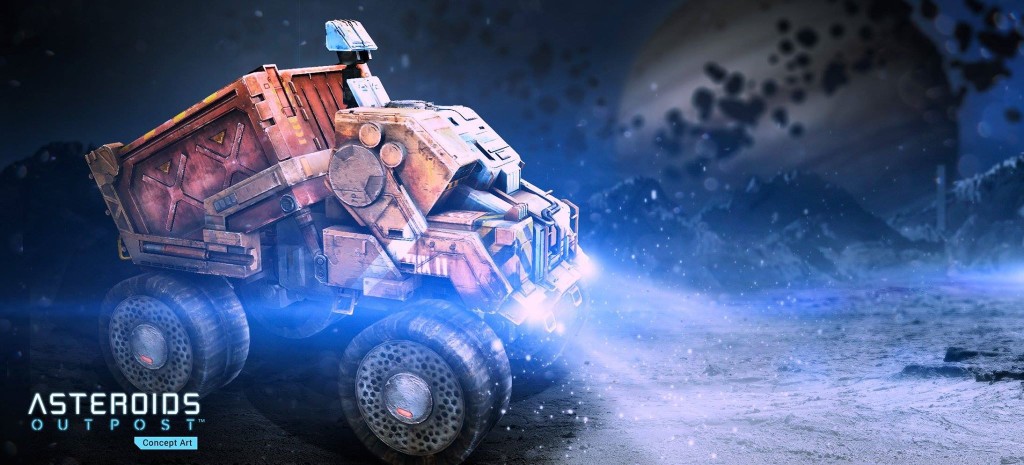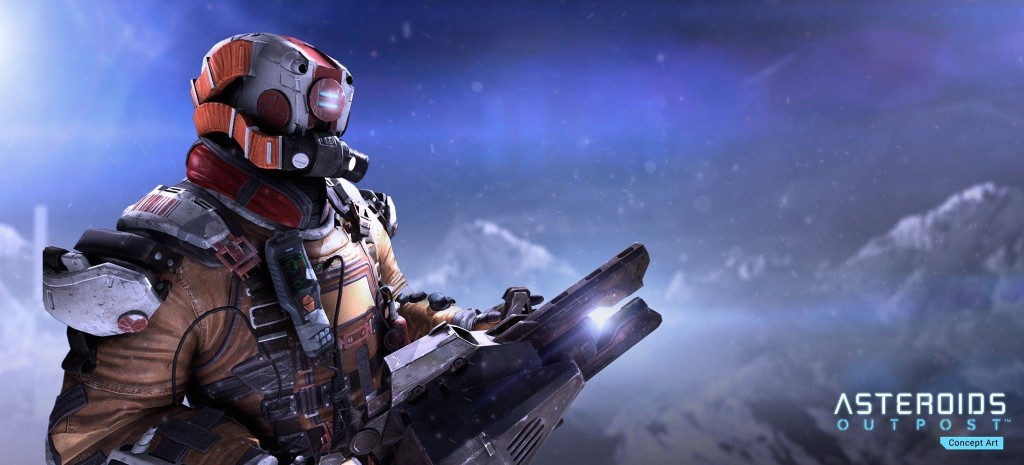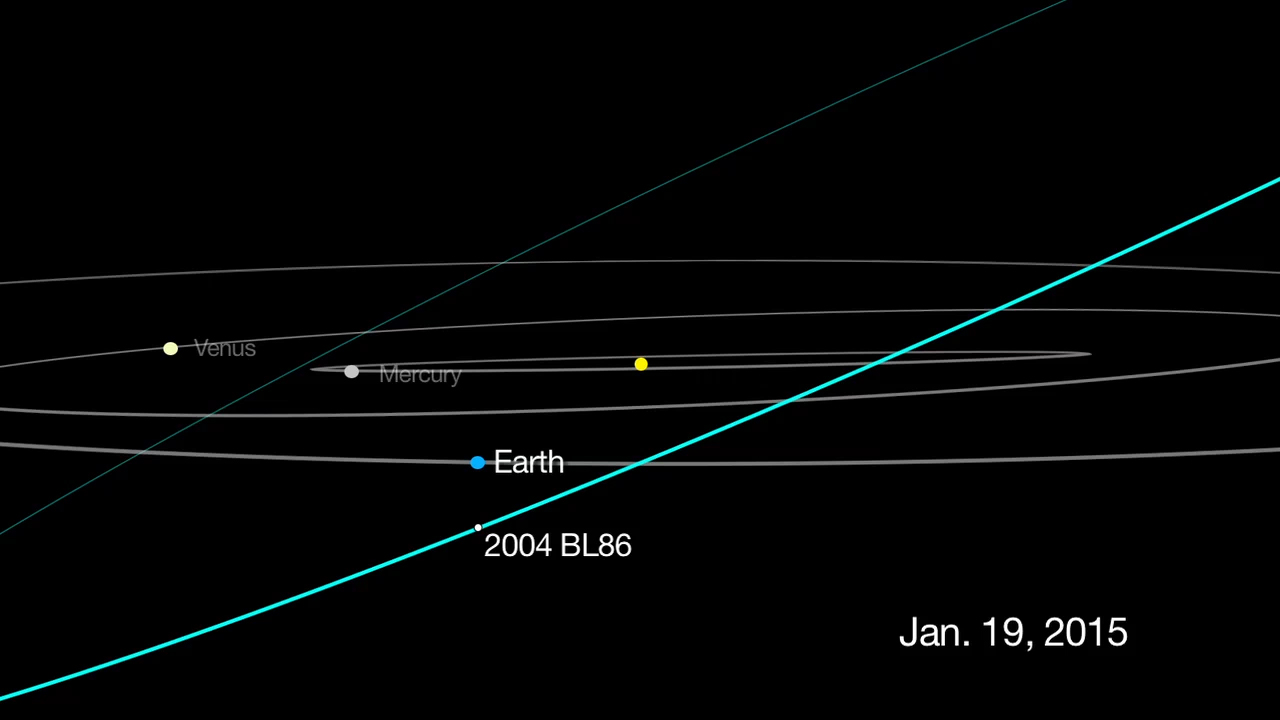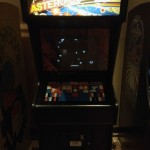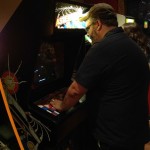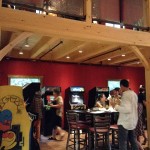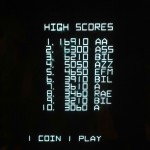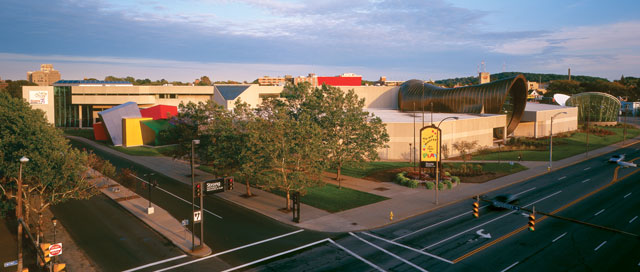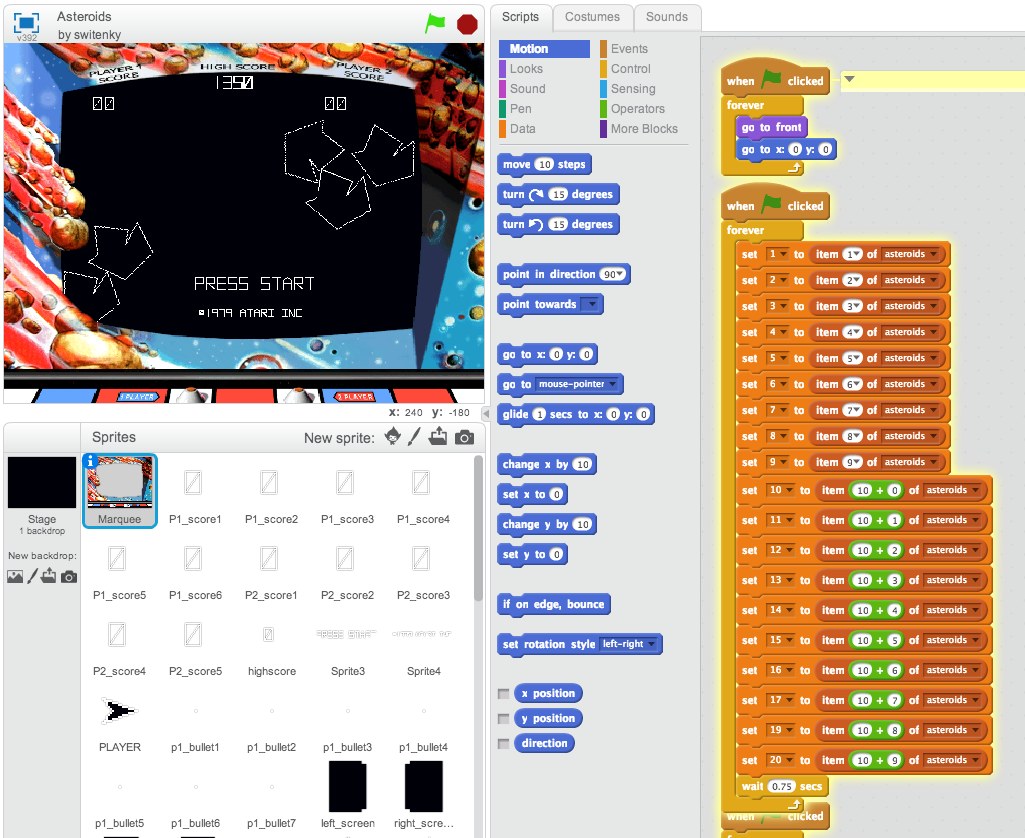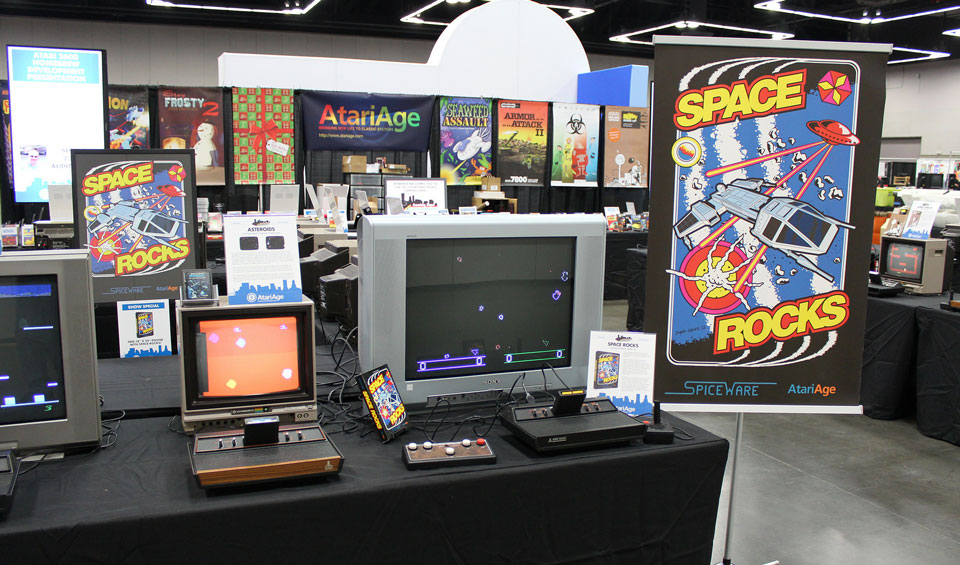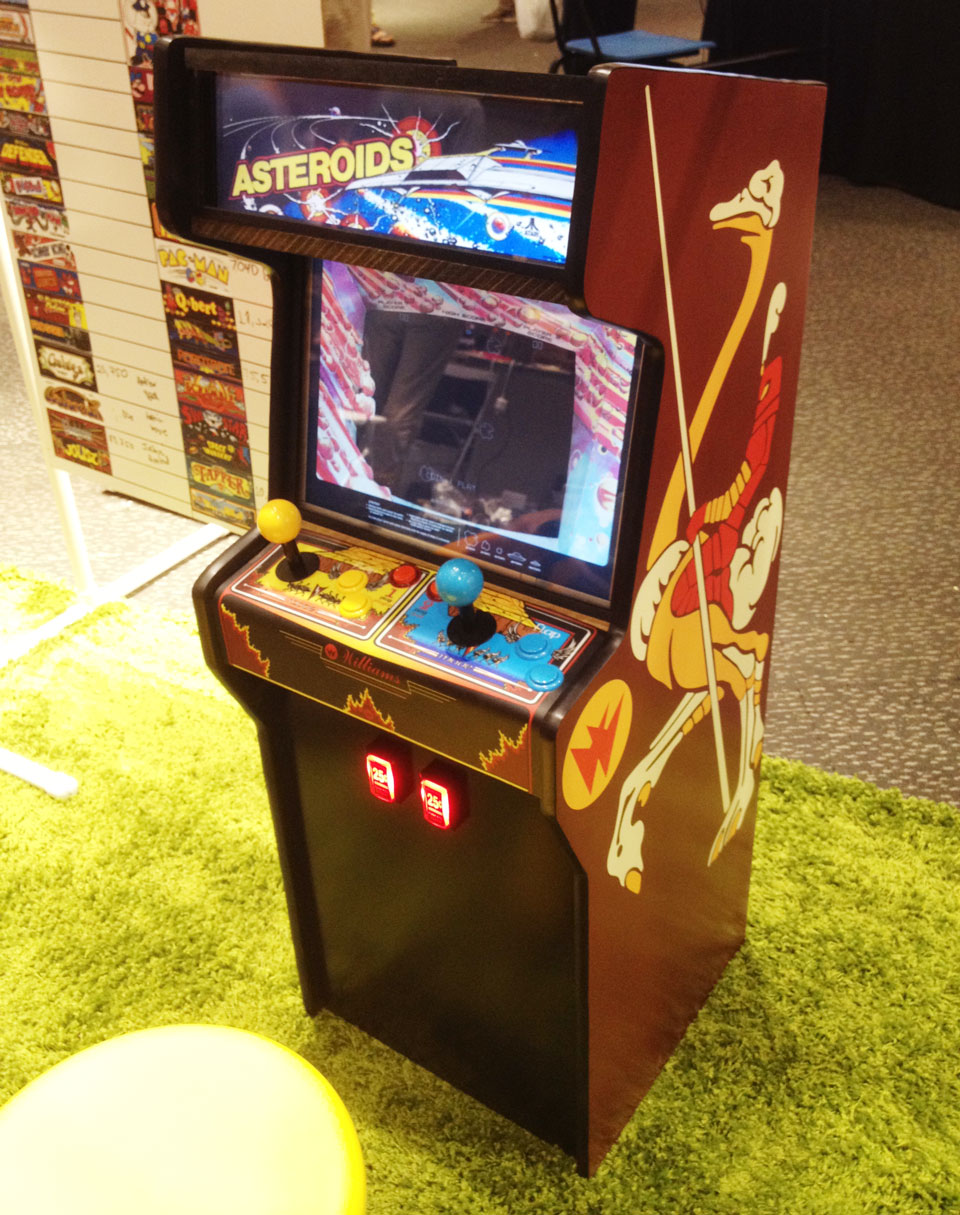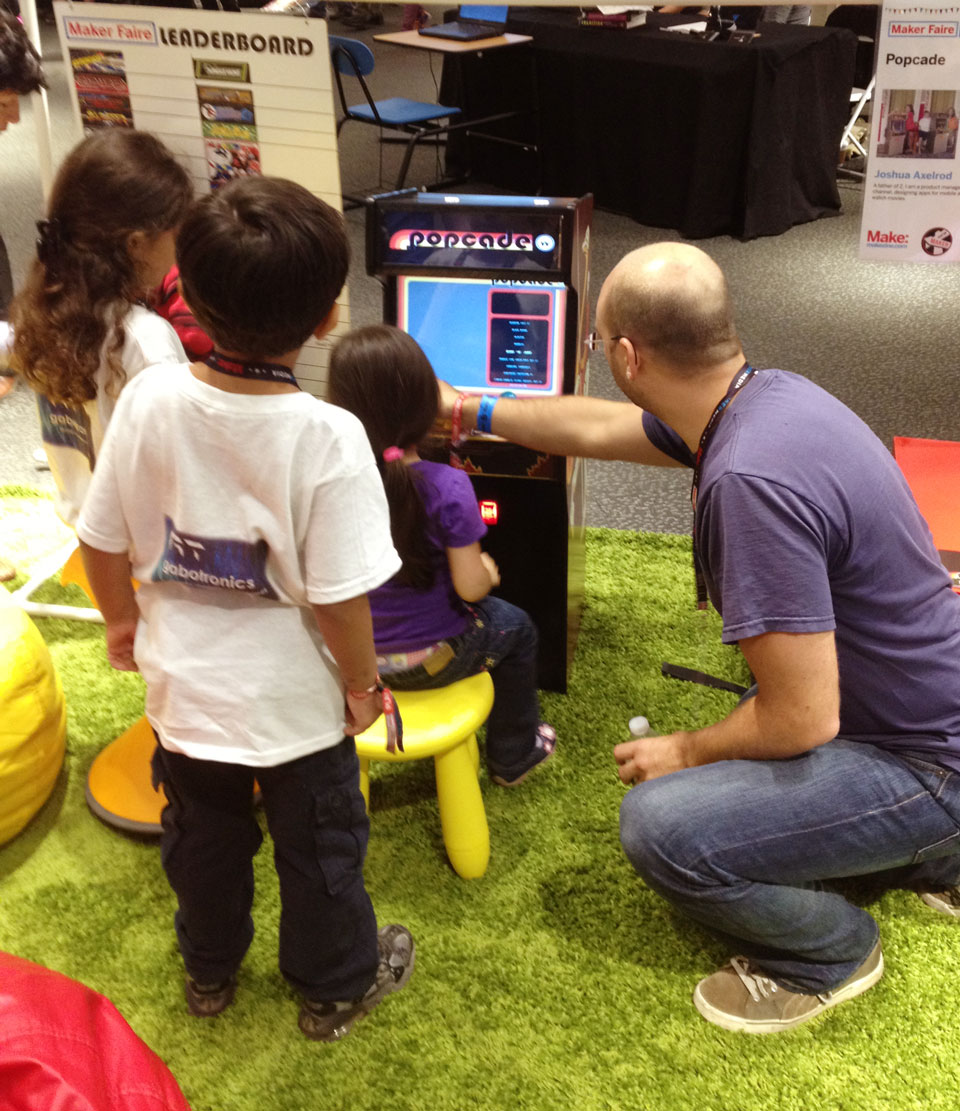Robot 3D Printers To Turn Asteroids Into Spaceships
Posted on April 18, 2016The company Made In Space, Inc. has received money from NASA to research their Project RAMA: Reconstituting Asteroids into Mechanical Automata.
They write, “The objective of this study is… to establish the concept feasibility of using the age-old technique of analog computers and mechanisms to convert entire asteroids into enormous autonomous mechanical spacecraft.”
In other words, they’ll use robot 3D printers to re-shape asteroids into mechanical spaceships, moving them into strategic orbits around the planet, or crashing them into bigger, Earth-threatening asteroids.
For a more thorough description of this, and other 2016 NASA Innovative Advanced Concepts (NIAC) program fund recipients, read “NASA’s Project RAMA Would Use Asteroids to Play Asteroids” at TheDrive.com.
And, here’s the Project RAMA description at nasa.gov.
Don Yeomans, Atari Asteroids’s 2015 Person of the Year
Posted on January 02, 2016
As 2015 draws to a close, Atari Asteroids.net is pleased to name Don Yeomans as its first ever Person of the Year. Why? Because while some of us have been targeting vector-based asteroids, he’s been doing the real thing.
Yeomans joined NASA’s Jet Propulsion Laboratory in 1976, and managed the Near-Earth Object Program Office from its establishment almost 17 years ago until his retirement in January, 2015. They “coordinate NASA-sponsored efforts to detect, track and characterize potentially hazardous asteroids and comets that could approach the Earth.”
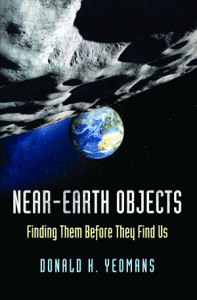 Yeomans says: “When I began doing this, asteroids were considered little more than vermin of the solar system, irritants that occasionally got in the way of astronomers taking pictures of some distant galaxy. While times certainly have changed, two things about near-Earth objects remain the same. We need to find them before they find us and tell everybody about them as efficiently and as clearly as possible.”
Yeomans says: “When I began doing this, asteroids were considered little more than vermin of the solar system, irritants that occasionally got in the way of astronomers taking pictures of some distant galaxy. While times certainly have changed, two things about near-Earth objects remain the same. We need to find them before they find us and tell everybody about them as efficiently and as clearly as possible.”
Yeomans received the 2013 Carl Sagan Medal from the American Astronomical Society (AAS) for his work. Article here.
He also wrote Near Earth Objects: Finding Them Before They Find Us, which has all sorts of good information about types of asteroids and how we find them.
For a good visualization of all known asteroids, check out this animation by Scott Manley. And for more on NASA’s asteroid work, check out our posts tagged “NASA.”
Atari Announces New Game: Asteroids Outpost
Posted on February 19, 2015Atari has unveiled the Asteroids reboot that CEO Fred Chesnais and Senior Product Lead Peter Banks first mentioned last year, Asteroids: Outpost.
Instead of being an arcade-style shooter like the original, it’s a sandbox survival game with online gameplay, where you explore an open world and build up what you need to get by.
The tagline is “Welcome to the new Gold Rush.”
With the earth’s mines nearly spent, industrialists rely on the wealth of the heavens. Our solar system’s massive Asteroid Belt is a mother lode of resources… “The Belt” is the humanity’s newest frontier, as wild and untamed as any that man has faced.
Ambitious prospectors blast off with little more than an Outpost Module and a Mining Tool, to tear the hide off these asteroids and find their fortunes.
Stephen Kleckner spoke with Atari’s Peter Banks for GameBeat. Banks says:
“Asteroids has a long and storied history… With the legacy of official versions and clones out in the world, you could almost call Asteroids a genre unto itself.
“That said, our goal with Asteroids: Outpost is really to expand the world of Asteroids beyond a single gameplay mechanic and explore the wider context of the game.
“The game is set on a massive asteroid, in our solar system’s asteroid belt, and part of the game is defending yourself and your base against deadly asteroid showers… Tied to this, a core gameplay mechanic is the construction and control of anti-asteroid defense systems to protect your outpost. This mechanic evokes classic gameplay without specifically reproducing it and fits comfortably within the larger context of the overall gameplay.”
Maybe Asteroids: Outpost will have a vector-based stick-figure mode?
It is being developed for the PC platform only, by Salty Games, and will be distributed through Steam. They’ll make it available for Early Access, meaning players can give feedback during development. Right now, there’s a splash page on the game’s website, as well as a Facebook page and Twitter account. The Steam page for Asteroids: Outpost is here. More news coming soon.
Read the full Peter Banks interview at GamesBeat, here.
Another Asteroid Buzzes Earth
Posted on January 24, 2015On January 26, 2015, asteroid 2004 BL86 will pass 3 lunar distances from Earth — not nearly as harrowing as when 2005 YU55 zipped past in 2011, but still close enough to excite scientists, who will study the asteroid with microwaves.
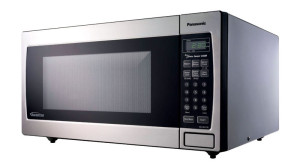 The asteroid should be close enough to Earth for amateur astronomers to see it with small telescopes and large binoculars, and for professional astronomers to reheat leftovers on the asteroid surface.
The asteroid should be close enough to Earth for amateur astronomers to see it with small telescopes and large binoculars, and for professional astronomers to reheat leftovers on the asteroid surface.
Download an animation of the flyby, and read more about it at NASA JPL’s website.
Check out other real asteroid news on AtariAsteroids.net.
Atari Documents Acquired by Museum
Posted on July 01, 2014Twenty-two palettes’ worth of documents from Atari’s heyday were recently acquired by the International Center for the History of Electronic Games (ICHEG), housed at the Strong National Museum of Play in Rochester, NY.
The “Atari Coin-Op Divisions Collection, 1972-1999,” is a massive collection chronicling the development and production of virtually every Atari coin-operated game over that time period.
The material includes development binders and source code for Asteroids, beginning with developer Ed Logg’s handwritten notes on the control setup and sound effects.
The acquisition also includes Maze Invaders, a coin-op game which was assigned to Ed Logg and built in 1981, but never released.
For the full story of how ICHEG came by this mother lode, read Owen Good’s article at Polygon.com.
And for a brief history of Ed Logg and the birth of Asteroids, read this.
Asteroids Reproduced with Scratch
Posted on January 22, 2014Here’s a clone of Asteroids created with Scratch, a popular educational programming language. What’s great is that even if you’ve never written a line of code, you can look under the hood and see how a game like this is put together — and if you want, you can tinker with it yourself.
Side-note, Scratch was developed at MIT Media Lab Lifelong Kindergarden Group. Also developed at MIT: Spacewar!. Read your history here.
Asteroids Controller with Raspberry Pi
Posted on December 27, 2013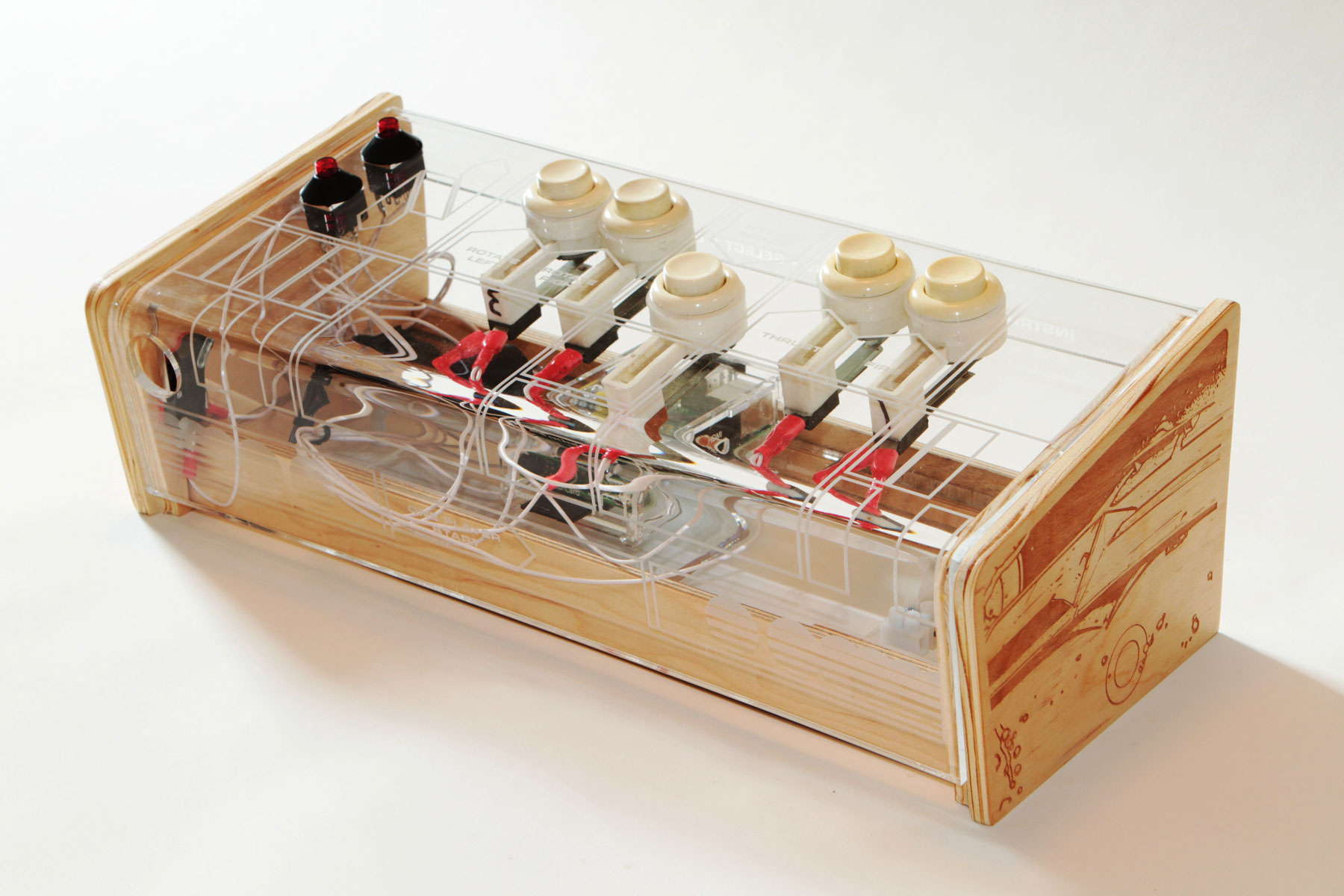
In addition to running this website, your humble blog host likes to tinker.
This past summer I had access to a laser cutter, CNC router, and some creative technology experts in New York — so I decided to learn some new tools and make a desktop Atari Asteroids controller running an arcade machine emulator (MAME) on a tiny Raspberry Pi computer. All you need to provide is power in and audio/video out.
Read the full write-up on my personal site for a walkthrough of the fabrication, plus design files.
And for anyone looking to build an Asteroids control panel, here’s the image I traced from an original:
asteroids_controls.pdf (editable PDF)
asteroids_controls_cs3.ai (Illustrator file)
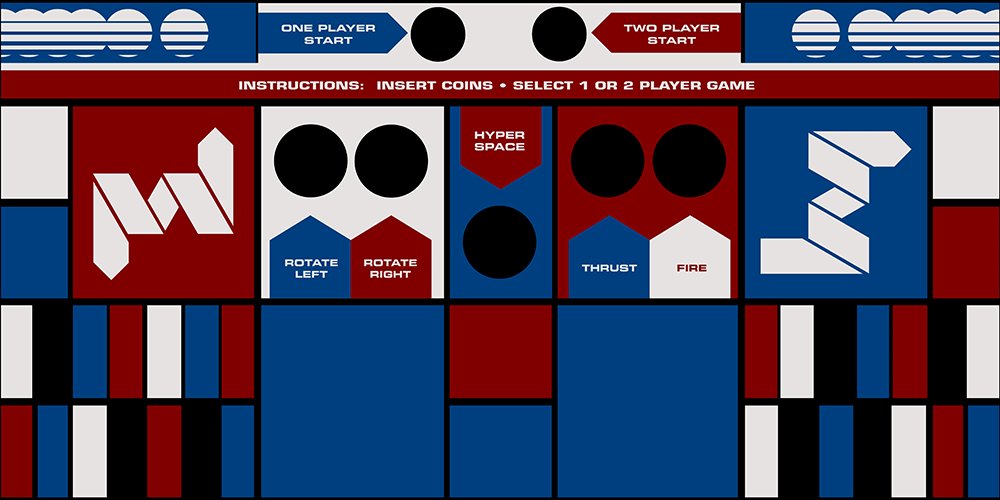
Space Rocks! Updates Asteroids for the Atari 2600
Posted on December 12, 2013Asteroids for the Atari 2600 is not the same thing as the arcade version. It’s got simplified gameplay and rasterized graphics. But Darrell Spice, Jr. has just created Space Rocks, a homebrew Atari game which brings arcade elements to the home console.
He explains: “Instead of the predominately up/down movement found in the original home version, Space Rocks features arcade like movement. The options menu lets you control the style of graphics (solid or ‘vector’), Magna-Mines (the ‘killer satellite’ from Asteroids Deluxe), friction (whether or not the ship will gradually slow down after thrust is removed) as well as other features.”
Space Rocks is as good as it sounds, and the player customizability is deep but intuitive. It was released at the Portland Retro Gaming Expo in October 2013 (pictured above), and available for purchase from AtariAge, as a dedicated cartridge with professional-looking packaging and artwork, for play on a real Atari 2600.
The final version of the game can also be downloaded for use with the Atari emulator Stella, or with a Harmony Cartridge for the 2600 via an SD card. The ROM is freely available in this discussion thread – to find it, take the very first link, for Release Candidate 7.
Spice explains that Space Rocks will not work with other Atari flash cartridges than Harmony, as “the game utilizes the ARM processor in the Harmony as a co-processor, similar to the DPC that’s found in Activision’s Pitfall II for the 2600.”
Darrell Spice, Jr. is actively involved with Atari Age and the homebrew scene. He says about the origin of Space Rocks:
“I was working on Frantic, a remake of Berzerk/Frenzy, when I wondered if the Kernel for Frantic could be used as a basis for a remake of Asteroids. TIA, the Atari’s video chip, is so primitive it only has enough information to draw a single scan line on the TV. The Kernel is the part of the program that updates TIA in real time, scan line by scan line, in order to create the display.
“The Kernel would have less to update, as Space Rocks doesn’t need the playfield (the chunky background graphics), so repositioning of the 2 sprites (yep, the 2600 only has 2 sprites) could be done more frequently than in Frantic. I thought that would result in result in less flicker, but wasn’t sure if it would be acceptable or not so I did up a quick test.
“I planned to return to work on Frantic after that, but like an earworm I couldn’t get the ideas for Space Rocks out of my head so I continued to work on it. I just wrapped up work on Stay Frosty 2, a new AtariAge holiday cart, so am taking a break from Atari projects and will most likely resume work on Frantic early next year.”
For more detailed development info about Space Rocks, visit Spice’s project blog:
http://atariage.com/forums/blog/blog-148/cat-120-space-rocks
And for Frantic:
http://atariage.com/forums/blog/blog-148/cat-59-frantic
Visit his website spiceware.org for more information.
Popcade Cabinet
Posted on September 29, 2013Joshua Axelrod unveiled his miniature MAME arcade cabinet at the New York MakerFaire, and it’s a beauty. He was inspired by the size of Jürgen Müller’s Asteroids Mini, and decided to expand its roster by making it a MAME machine modeled on the classic Williams Joust cabinet, capable of playing nearly any classic arcade game. Popcade is about three feet tall and thirteen inches wide, perfect to fit in a house or apartment without eating up an entire room.
Aside from spot-on design, the thing that makes Popcade stand out is the marquee and bezel art. Axelrod created files for a number of classic games; selecting a game from the main menu changes the marquee screen up top, and loads the bezel art around the game on the main screen. Each game feels like you’re playing a dedicated cabinet (aside from the Joust bird on the side, and the “Flap” label on the button).
Of course, Asteroids is one of the games, which caught our eye at MakerFaire. The Popcade is the perfect size for a small child, so Axelrod’s own children are learning about the classics.
You can buy your own Popcade at the Popcade website. It comes without game ROMs, but will run like a charm when you install them separately.
